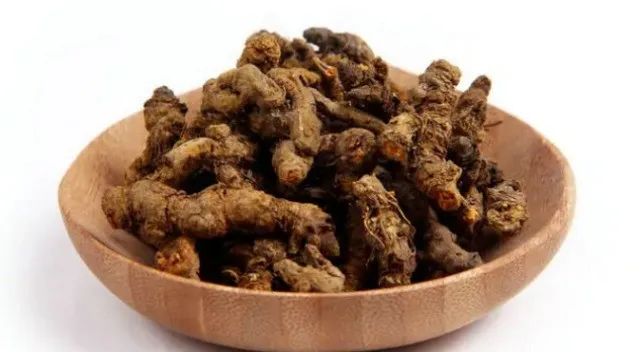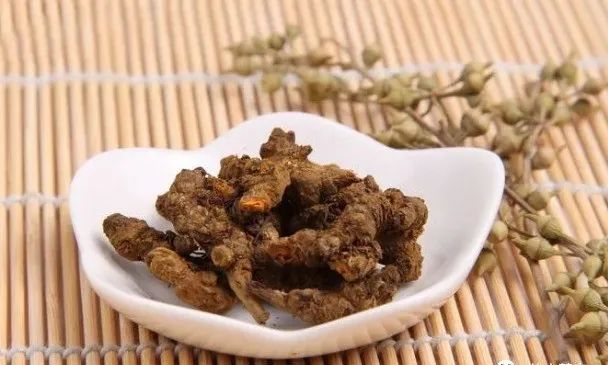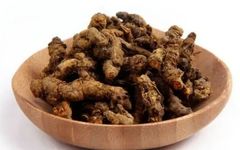Director Ning provides you with knowledge on health and wellness.Click below to follow for free↓↓↓

Huang Lian (Coptis chinensis) is a commonly used traditional Chinese medicine (TCM) herb, characterized by its earthy yellow color, which gives it its name. Its taste can be described as “a mute person eating Huang Lian, bitter but unable to express it.” Despite its bitterness, it is beloved for its medicinal properties. As the saying goes: “Honest advice is hard to hear, and good medicine is bitter to the mouth.” Huang Lian is classified as a qing re zao shi (clearing heat and drying dampness) herb, primarily used for conditions of damp-heat. Its properties are bitter and cold, and it enters the heart, spleen, stomach, liver, gallbladder, and large intestine meridians. It is effective in clearing heat, drying dampness, purging fire, and detoxifying. Clinically, it is mainly used for damp-heat obstruction, vomiting, diarrhea, abdominal pain, as well as for heat excess causing irritability, blood heat leading to bleeding, and conditions such as stomach heat vomiting, thirst, and carbuncles or sores. Huang Lian Shangqing tablets are commonly used and have significant effects in daily life. Let’s learn more about Huang Lian with Huixiang Pharmacy!

[Efficacy of Huang Lian]
Herbal Name
Huang Lian (Coptis chinensis)
Aliases
Huang Lian, Wang Lian, Wei Lian, Chuan Lian, Ji Zhua Lian.
Medicinal Part
The rhizome of the plant Coptis chinensis Franch. from the Ranunculaceae family.
Geographical Distribution
Grows in cool, damp, shaded areas in mountainous regions, found wild in valleys at altitudes of 1000 to 1900 meters. Cultivated in high-altitude, cool mountainous areas, particularly in Sichuan.
Harvesting and Processing
Harvested in autumn, removing fibrous roots and soil, then dried and cleaned of residual fibrous roots.
Properties and Meridian Entry
Cold in nature, bitter in taste. Enters the heart, spleen, stomach, liver, gallbladder, and large intestine meridians.
Functions and Actions
Clears heat, dries dampness, purges fire, and detoxifies. It belongs to the category of clearing heat herbs, specifically those that clear heat and dry dampness.
Chemical Composition
Contains berberine, along with other alkaloids such as coptisine, methylcoptisine, palmatine, jatrorrhizine, and others. The authenticity of Huang Lian can be identified using nuclear magnetic resonance hydrogen spectroscopy. Berberine is the main active component in Huang Lian.
Herb Characteristics
Often clustered, usually curved, resembling chicken feet, with single rhizomes measuring 3 to 6 cm in length and 0.3 to 0.8 cm in diameter. The surface is grayish-yellow or yellow-brown, rough, with irregular nodular protrusions, fibrous roots, and remnants of fibrous roots. The upper part often retains brown scale leaves, with the tip frequently having remnants of stems or petioles. The texture is hard, with an uneven cross-section; the bark is orange-red or dark brown, while the wood is bright yellow or orange-yellow, arranged radially, and the pith may be hollow. It has a faint odor and an extremely bitter taste.
Plant Morphology
A perennial herb. The rhizome is yellow and often branched. All leaves are basal, with leaf blades being thick and paper-like, trifoliate, with the central lobe having a petiole, ovate-rhombic, deeply pinnately lobed, and serrated edges. The lateral lobes are unevenly and deeply lobed. The flower stalk has 1 to 2 flowers; the inflorescence is terminal, with 3 to 8 flowers, and the involucral bracts are usually 3, lanceolate, and deeply lobed. The small bracts are round and slightly smaller; there are 5 sepals, yellow-green, and narrowly ovate; the petals are linear and lanceolate, with a nectar groove in the center; there are numerous stamens, with the outer whorl slightly shorter or nearly equal in length to the petals; there are 8 to 12 carpels, free, with short stalks. The fruit is a capsule with 6 to 12 seeds, each with a fine stalk. The flowering period is from February to April, and the fruiting period is from March to June.
[Functions of Huang Lian]
Main Indications
Clears heat, dries dampness, purges fire, and detoxifies. Clinically used for damp-heat obstruction, vomiting, diarrhea, abdominal pain, heat excess causing irritability, blood heat leading to bleeding, stomach heat vomiting, thirst, and carbuncles or sores.
Pharmacological Actions
1. Protects the liver and benefits the gallbladder.
2. Lowers blood sugar and lipids.
3. Regulates the spleen and stomach.
4. Clears heat and purges fire.
5. Exhibits antibacterial and anti-inflammatory properties.
6. Lowers blood pressure.
Methods of Consumption
Huang Lian Ejiao Chicken Yolk Soup
Ingredients: Two chicken yolks, 12 grams of Huang Lian, 3 grams of Huang Qin, 9 grams of Ejiao, and 3 grams of Bai Shao.
Preparation: First, boil Huang Lian, Huang Qin, and Bai Shao with 8 cups of water, reducing to 3 cups. After straining, add Ejiao to dissolve, then mix in the chicken yolks.
Effect: Consuming Huang Lian Ejiao Chicken Yolk Soup can clear heat and nourish yin. Suitable for conditions of heat evil entering the nutrient level, damaging the nutrient yin and heart fluid, persistent fever, irritability, inability to sleep, red and dry tongue, and thin rapid pulse.
Huang Lian Mu Xiang Stewed Pig Intestines
Ingredients: 5 grams of Huang Lian, 10 grams of Mu Xiang, 50 grams of pig intestines, 3 slices of ginger, and appropriate amounts of garlic and starch.
Preparation: Grind Huang Lian and Mu Xiang into a fine powder; clean the pig intestines. Stuff the powdered herbs into the intestines, securing both ends with toothpicks or thread, place in a steamer, and add 250 ml of cold boiled water, stewing for 2.5 hours.
Effect: Very suitable for those with qi stagnation, abdominal distension, and pain.
Huang Lian Jie Du Decoction
Ingredients: 9 grams of Huang Lian, 6 grams each of Huang Qin and Huang Bai, and 9 grams of Zhi Zi.
Preparation: Combine all four ingredients in a clay pot, boil with water for 30 minutes, and strain. Take 1 dose daily, divided into 2 warm servings.
Effect: Clears heat, dries dampness, purges fire, and detoxifies.
Related Combinations
1. For pain in the stomach due to excessive consumption of hot foods, or persistent vomiting: 18 grams of Huang Lian and 3 grams of Gan Cao (honey-fried). Prepare as a decoction with 1 large cup of water, boil down to 7 parts, strain, and take warm. (From “Heart Medicine Collection”)
2. For stomach pain unresponsive to other treatments, use a cold formula for heat: 18 grams of Huang Lian and 3 grams of Fu Zi (processed, skin and navel removed). Finely chop, prepare with 3 slices of ginger and 1 jujube, using 1.5 cups of water, boil down to 1 cup, strain, and take warm. (From “Medical Truth”)
3. For persistent vomiting due to damp-heat: 0.9 to 1.2 grams of Huang Lian and 0.6 to 0.9 grams of Su Ye, decoct and take immediately. (From “Damp-Heat Disease Chapter”)
4. For hemorrhoids: 60 grams of Huang Lian, prepare as a paste, adding equal parts of Mang Xiao and 3 grams of Bing Pian. Apply to hemorrhoids for relief. (From “Danxi’s Treatment Essentials”)
5. For oral ulcers: 15 grams each of Huang Lian, Pu Xiao, and Bai Fan, and 30 grams of Bo He. Grind into a coarse powder, place in the gallbladder of a yellow cow in December, hang for two months, and when oral ulcers occur, grind finely and apply to relieve heat and saliva. (From “Complete Book of Jingyue”)
Contraindications
Use with caution in cases of stomach deficiency with vomiting, spleen deficiency with diarrhea, and nocturnal kidney leakage.
Director Ning provides you with knowledge on health and wellness.Click below to follow for free↓↓↓
Note:Some text and images in this article are sourced from the internet. The purpose of sharing this article is to disseminate more information. If there are any errors in source attribution or infringement of your legal rights, please notify us immediately, and we will delete it promptly and apologize for the oversight.
You might also be interested in:
Chinese Herbs: The Efficacy of Cherry
Chinese Herbs: The Efficacy of Cicada Slough
Chinese Herbs: The Efficacy of Chai Hu

